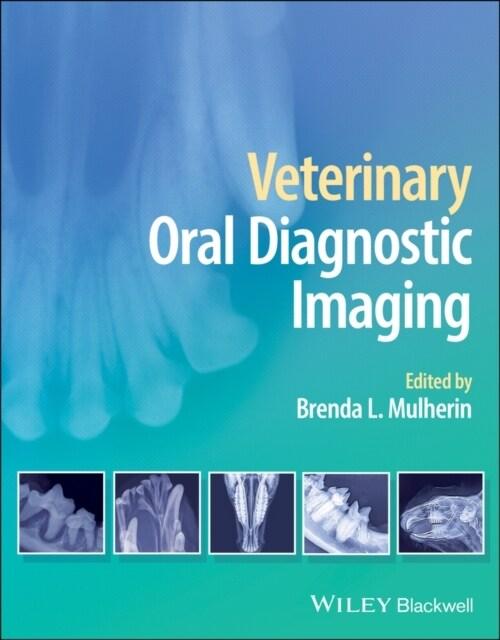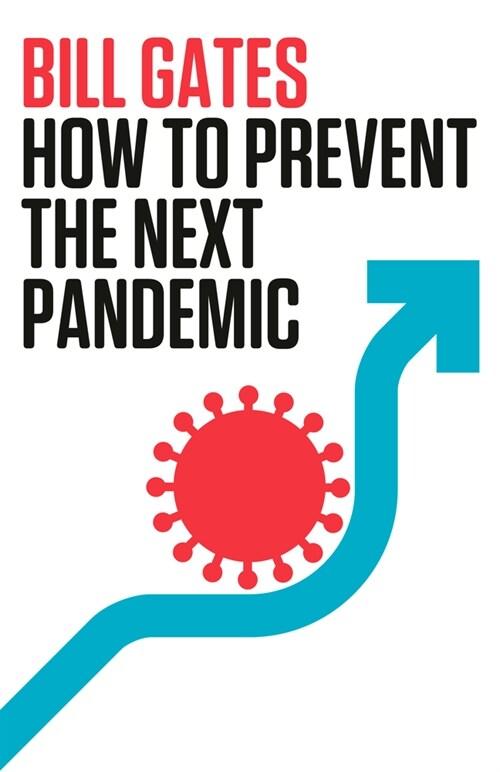책 이미지

책 정보
· 분류 : 외국도서 > 의학 > 수의학
· ISBN : 9781119780502
· 쪽수 : 448쪽
목차
List of Contributors
Preface
Acknowledgments
Chapter 1 History, Physiology, Modality Options, and Safety for Diagnostic Imaging of the Oral Cavity
History of Diagnostic Imaging
Discovery of X-rays
Developing of Safety Measures
Shortening of Exposure Time
Glass Plates to Film
Progression to Digital
Philosophy of Diagnostic Imaging
Choosing the Appropriate Modality
Ability to Interpret Findings
Radiographic Indications
Documentation of Disease
Value of Full Mouth Radiography
American Animal Hospital Association Guidelines Regarding Dental Radiography
Intraoral Dental Radiographic Equipment
Generators
Wall Mount units
Handheld Units
Mobile Units/Castor Mounted Units
Film
Standard Film
Digital Image Acquisition
Computed Radiography (CR) Photostimulable Phosphor (PSP) Plates (Indirect Plates)
Digital Radiography Image Sensors (Direct Plates)
Similarities of Indirect and Direct Plates
Radiographic Imaging
Basic Unit of an X-ray
Milliamperes (mA), Kilovoltage peak (kVp), and Exposure Time
Radiographic Densities
Radiopaque
Radiolucent
Digital Image Creation
Creation of a Digital Image
Digital Imaging and Communications in Medicine Format (DICOM)
Pixels
Advanced Imaging Modalities
Computed Tomography
Cone Beam Tomography (CBCT)
Magnetic Resonance Imaging
Definitions Related to Imaging Modalities
Sagittal Plane
Transverse Plane
Dorsal Plane
Computed Tomography Window Width and Window Level
Window Width
Window Level
Other Common Viewing Windows
Bone Window
Soft Tissue Window
Radiation Safety
Radiation Safety Apparel
Collimation
As Low As Reasonably Achievable (ALARA)
Time, Distance, and Shielding
Time
Distance
Shielding
Radiation Safety Equipment Inspection
Protective apparel
Care of Radiation Safety Equipment
Radiation Safety Inspection Protocol
Chapter 2 Digital Dental Radiographic Positioning and Image Labeling
Benefits of Proper Positioning
Practicing Techniques
Use of Position Indicating Device (PID)
Positioning Techniques
Patient Positioning
Sternal Recumbency
Lateral Recumbency
Dorsal Recumbency
Sensor/Plate/Film Placement
Basic Positioning of Sensor
Eliminating Unused Film Space
Visualization of the Crown and Space Apical to the Root
Intra Oral Parallel Technique
Ideal Radiographic Technique
Placement of Sensor for Parallel Technique
Size Matters
Alternative Positioning
Parallel Technique for Cats
Intra Oral Bisecting Angle Technique
Plane of the Tooth, Film, and the Angel that Bisects
Shadow Game: Elongation, Foreshortening, and the Bisecting Angle
Axis of the Sensor, the Tooth and the PID
Positioning of the Patient Matters
Anatomical Variations
Uses of the Bisecting Angle Technique
Occlusal Technique
Localize Tooth Roots
PID Perpendicular to the Target Area and Sensor
Extra Oral Technique
Maxillary Premolars and Molar in Felines
Eliminate Superimposition of Zygomatic Arch
Extraoral Labeling
“Almost Parallel” or “Near Parallel”
Maxillary Premolars and Molar in Cats
Decrease Superimposition of Zygomatic Arch
Localization of Palatal Roots
Clark’s Rule or “SLOB” Same Lingual Opposite Buccal
Separation of Mesiobuccal and Mesiopalatal Roots
Techniques for Small Patients and Caudal Teeth
Combination of Techniques
Radiographing from a Mesial or Distal Projection
Technique Errors
Foreshortening
Underrepresentation of Disease
Elongation
Overrepresentation of Disease
Correction of Error
Position Bean Perpendicular to Bisecting Angle
Cone Cutting
Circular artifact
Reposition the PID
Reposition the Sensor
Increase the distance of the PID from the Sensor
Missing the Apex
2-4 mm of Hard or Soft Tissue Apical to Root
Reposition the Sensor
Reposition the PID
Flip Orientation of Sensor
Over and Under Exposed
Control of kVp, mA, or mAs
Underexposure
Increase kVp or mAs
Overexposure
Decrease kVp or mAs
Radiographic Artifacts
Direct Artifacts
Chemically Developed Radiographs
Contamination of Sensor
Damage to Sensor
Age of Equipment
Indirect Artifacts
Endotracheal Tubes
Pumice/Prophy Paste
Positioning Devices
Repeated Radiographs
Improper Positioning of PID
Elongation
Foreshortening
Improper Generator Settings
Overexposed
Underexposed
Improper Film Placement
Too Far out of the Oral Cavity
Too Far into the Oral Cavity
Sensor Placed Backwards
Chapter 3 Interpretation of Normal Radiographic Anatomy
Value of Intraoral Radiographic Imaging
Value of Radiographs in dogs
Value of Radiographs in Cats
Quality of images
Exposure Artifacts
Positioning Techniques
Positioning Artifacts
Mounting of Standard Dental Radiographs
Types of Mounting
Labial Mounting
Lingual Mounting
Labial Mounting of Standard Dental Radiographic Film
Lingual Mounting of Standard Film
Digital Radiographic Mounting
Labial Mounting- Positioning of Teeth
Determining Maxilla from Mandible
Determining Right from Left
Viewing of Maxillary and Mandibular Canines, Premolars and Molars
Viewing of Maxillary and Mandibular Incisors
Modified Triadan Numbering System
Deciduous vs Permanent Teeth
Eruption Patterns
Mixed Dentition
Interpretation of Images
Tooth Root Numbers
Maxillary Teeth
Mandibular Teeth
Evaluation of the Structures
Crown
Enamel
Pulp
Dentin
Root
Root Formation
Cementum
Abnormalities associated with Cementum
Periodontal Ligament
Chevron
Missing or Supernumerary Teeth
Supernumerary Roots
Reduced Number of Roots and Root Malformations
Developmental Root Abnormalities
Fusion
Concrescence
Gemination
Dilacerated Tooth Roots
Bone
Bone Loss
Horizontal Bone Loss
Vertical Bone Loss
Furcation Bone Loss
Interpretation of Radiographic Shadows
Nomenclature
Mesial
Distal
Lingual
Palatal
Coronal
Apical
Facial
Buccal
Vestibular
Labial
Occlusal
Diagrams of Normal Radiographic Anatomy of the Dog and Cat
Chapter 4 Interpretation of Common Oral Pathology in the Canine Patient
Periodontal Disease
Stages of Periodontal Disease
Types of Bone Loss
Horizontal Bone Loss
Vertical Bone Loss
Furcation Bone Loss
Supernumerary Roots and Teeth
Canine Tooth Resorption
Types of Tooth Resorption
External Surface Resorption
External Replacement Resorption
External Inflammatory Resorption
External Cervical Root Surface Resorption
Treatment of Tooth Resorption
Odontogenic Cysts
Dentigerous Cysts
Tooth Fractures
Root fractures
Retained Tooth Roots
Endodontic Disease
Etiology
Radiographic Signs of Endodontic Disease
Widened Periodontal Ligament Space
Loss of Lamina Dura
Periapical Lucency
External and Internal Root Resorption
Widened Pulp Canal
Pulp Canal Calcification
Apical Periodontitis
Acute Apical Abscess
Endodontic Therapy
Attrition and Abrasion
Eruption Abnormalities
Persistent Deciduous Teeth
Abnormal Eruption
Chapter 5 Interpretation of Common Oral Pathology in the Feline Patient
Periodontal Disease
Stages of Periodontal Disease
Types of Bone Loss
Horizontal Bone Loss
Vertical Bone Loss
Furcation Bone Loss
Buccal Alveolar Expansile Osteitis
Tooth Resorption
Stages of Tooth Resorption
Types of Tooth Resorption
Criteria for Performing Crown Amputation/Intentional Root Retention
Supraeruption/Extrusion
Osteomyelitis and Osteitis
Retained Tooth Roots
Endodontic Disease
Chapter 6 Oral Surgery: Neoplasia and Cystic Conditions
Radiographic indications of neoplasia (benign and malignant)
Benign oral tumors
Canine Acanthomatous Ameloblastoma (CAA)
Peripheral Odontogenic Fibroma (POF)
Feline Inductive Odontogenic Tumor (FIOT)
Malignant oral tumors
Nontonsillar Squamous Cell Carcinoma (SCC)
Papillary Squamous Cell Carcinoma (PSCC)
Oral Malignant Melanoma (MM)
Fibrosarcoma (FSA)
Osteosarcoma (OSA)
Multilobular Osteochondrosarcoma (MLO)
Radiographic indications of cystic conditions
Dentigerous Cyst
Radicular Cyst
Canine Furcation Cyst
Surgical Ciliated Cyst
Lateral Periodontal Cyst
Odontogenic Keratocyst/Canine Odontogenic Parakeratinized Cyst
Compound and complex odontomas
Limitations of dental radiography for neoplasia
Chapter 7 Interpretation of Unique Pathology in the Canine and Feline Patient
Unique conditions with predilection for canine patients
Craniomandibular Osteopathy (CMO)
Idiopathic Calvarial Hyperostosis
Periostitis Ossificans (PO)
Malformed Roots/Root Hypoplasia
Dens invaginatus/Dens in Dente
Unique conditions observed in both canine and feline patients
Masticatory Myositis
Pulp Stones and Denticles
Osteosclerosis
Renal Secondary Hyperparathyroidism
Enamel Pearls
Unique conditions with predilection for feline patients
Dentition Abnormalities
Fused Roots
Supernumerary Roots
Supernumerary Teeth
Abnormal Eruption
Unerupted Teeth
Patellar Fracture and Dental Anomaly Syndrome (PADS) or Knees and Teeth Syndrome
Chapter 8 Diagnostic Imaging of Exotic Pet Mammals and Zoo Animals
Dental Diagnostic Imaging for Non-Traditional (Exotic) Animals
General considerations for Exotic Companion Mammals
Restraint
Knowledge of normal anatomy
General Positioning and Projection Recommendations
Standard Radiography
Standard Radiographic Positions
Lateral and dorsoventral
Oblique Views
Rostrocaudal
Intraoral radiographs
Intraoral films used extraorally
Magnification techniques
Anatomical variations
Rabbits
Guinea Pigs and Chinchillas
Rats, Mice, Hamsters, Gerbils and other commonly kept rodent pets
Ferrets
African Pygmy Hedgehogs
Sugar Gliders
Prairie dogs
Captive Non-domestic or “Wild” Mammals
Small Zoologic species
Non-human Primates
Carnivores
Radiographic Positioning and Techniques in Captive Animals
Animal Training
Dental Conditions in Zoologic Animals
Trauma
Attrition
Macropod Progressive Periodontal Disease (MPPD)
Molar Progression
Advanced Diagnostic Imaging in Exotic Pet Mammals and Zoo Animals
Standard Computed Tomography
Cone Beam Computed Tomography
Micro-Computed Tomography
Considerations for Computed Tomography
Chapter 9 Diagnostic Imaging and Interpretation of the Equine Patient
Introduction to Equine Dental Radiographs
Radiation Safety
Radiographic Systems
Direct Digital Radiographic System
Computed Tomography
Standard Radiographic System
Radiographic Technique
Guidelines for Radiographic Views
Concepts to Understand
Directing the Primary Beam Through the Interproximal Spaces
Open Mouth Oblique Cheek Teeth Projections
Radiographic Views
Lateral View
Dorsoventral View
Dorsal Ventral Oblique Projection of the axillary cheek teeth
Ventral Dorsal Oblique Projection of maxillary cheek teeth
Ventral Dorsal Oblique Projection of the mandibular cheek teeth
Dorsal Ventral Oblique Projection of the mandibular cheek teeth
Occlusal Intraoral View of the maxillary incisors and canines
Occlusal Intraoral View of the mandibular incisors and canines
Evaluation of an Image
Labial mounting
Radiographic anatomy
Radiographic changes in dental disease
Equine Odontoclastic Tooth Resorption and Hypercementosis (EOTRH)
Apical infections
Periodontal disease
Sinusitis
Neoplasia
Other Common abnormalities
Chapter 10 Advanced Imaging of the Veterinary Patient
Introduction to the use of advanced imaging techniques in the maxillofacial region
Choosing Advanced Imaging
Determining Between MRI or CT
Magnetic Resonance Imaging (MRI)
Technical principles of MRI
T1 and T2 Weighted Sequences
Other MRI Sequences
Indications for use of MRI over CT in the maxillofacial region
Temporomandibular joint disease
Salivary gland disease
Abnormalities in the muscles of mastication and inability to open/close mouth
Conclusions on the clinical indication for use of MRI
Computed Tomography (CT)
Technical principles of Multi-Detector CT (MDCT)
Technical principles of Cone Beam CT (CBCT)
Viewing CT images
Differences in imaging characteristics between CBCT and MDCT
Spatial resolution
Soft tissue imaging
Artifacts
Other impactful differences in practical use between MDCT and CBCT
Indications for use of either MDCT or CBCT in the maxillofacial region
Maxillofacial trauma
Bony pathology
Osteomyelitis/osteonecrosis
Fibro-osseous disease
Osseous neoplasia
Clefts
Indications for MDCT only (not CBCT) in the maxillofacial region
Oral neoplasia with a soft tissue component
Soft tissue pathology
Indications for CBCT only (not MDCT) in the maxillofacial region
Dentoalveolar trauma
Periodontal disease
Endodontic disease
Tooth resorption
Diagnosis and treatment of missing teeth
Conclusions on the clinical indication for use of CBCT versus MDCT





















